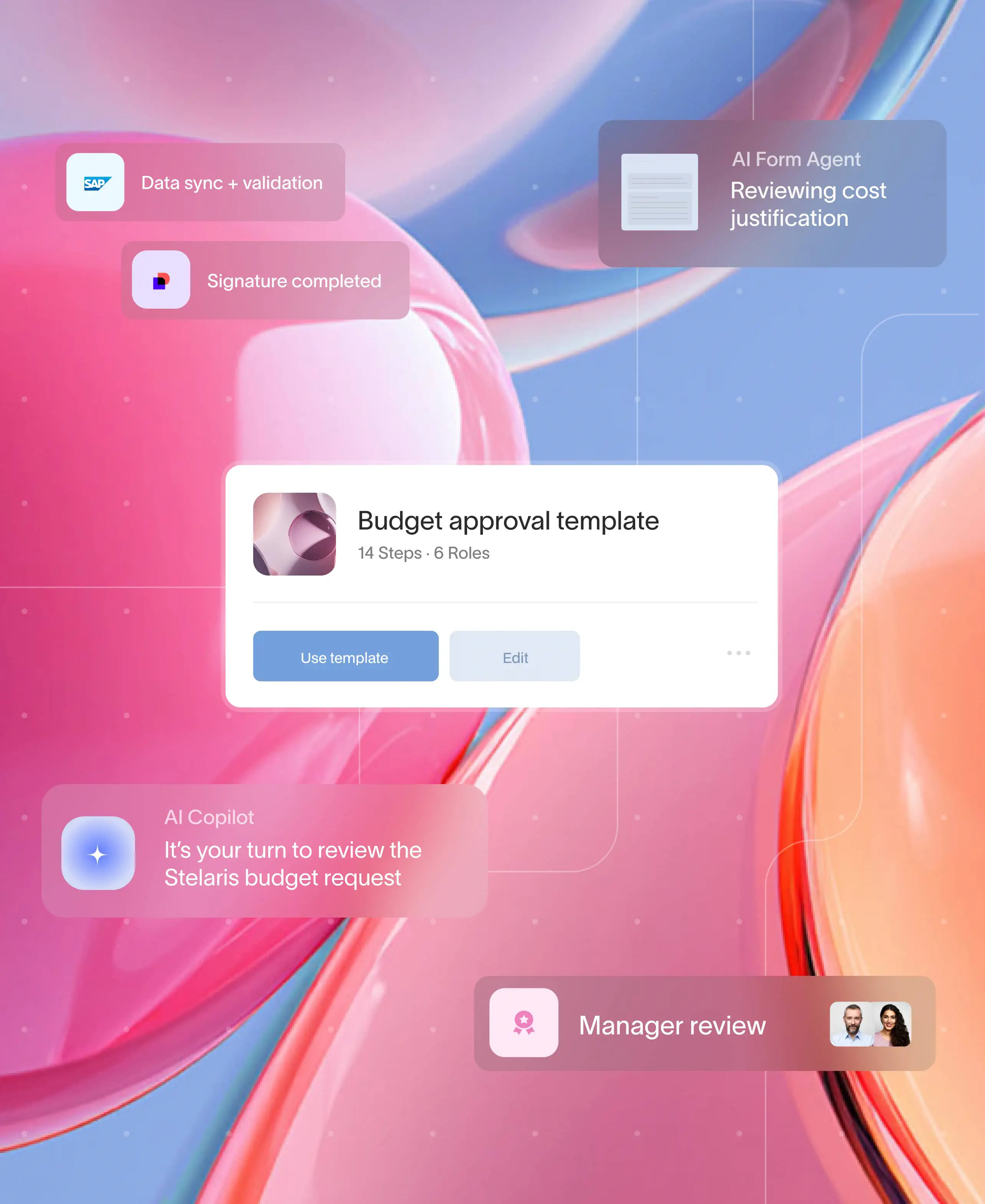
At a glance
- How to integrate portal functionality directly into your existing website
- The essential features that drive actual client adoption
- Three implementation approaches with real cost breakdowns
- Why branded client experiences beat generic software tools
How many times this week did a client ask "Where's that document you sent?" or "What's the status of my project?"
If you're managing client work through email and file sharing apps, you're making it harder than it needs to be.
Who this is for
You're running a business where client relationships and collaboration matters. Maybe you're a consultant managing multiple stakeholders. A wealth advisor handling sensitive documents. Or an agency coordinating creative feedback across teams.
Your current setup probably looks like this:
- Documents scattered across email, Dropbox, and Slack
- Clients asking for project updates you already sent
- Important approvals buried in overflowing inboxes
- Team members spending more time chasing than creating
Why your website needs a client portal
Think of a client portal as your website's VIP section. Instead of forcing clients to hunt through emails, everything they need lives in one branded space on your site.
The difference is night and day. Clients log into a familiar environment that matches your brand, see exactly what's needed, upload documents, and track progress without email ping-pong.
The four pillars of client portals that actually work
Pillar 1: Eliminate the email hurricane
Your client portal dashboard should be the single source of truth. When clients need something, they go there first.
Instead of managing creative campaigns through endless email chains, smart agencies centralize project briefs, asset versions, and feedback in one place. Clients see project timelines, download assets, and leave feedback without opening email.
Pillar 2: Keep everything visible and trackable
The best client portal solutions work like mission control dashboards. Clients see what's complete, what's pending, and what needs their attention.
Wealth managers serving high-net-worth clients use portals to show portfolio updates, document signing status, and meeting schedules in real-time. No more "Where do we stand?" phone calls.
Pillar 3: Automate the routine stuff
Smart client portal apps don't just store information. They move processes forward automatically.
When a client uploads a document, the system can trigger approvals, send notifications, and update project timelines. When someone misses a deadline, automated reminders keep things moving without manual intervention.
Pillar 4: Make it feel like your brand
Generic portal solutions scream "software tool," while a modern client portal feels like a natural extension of your website. Great customizable portals feel like natural extensions of your website.
Your clients should feel like they're still on your site, not visiting some third-party platform. Custom branding, your colors, your messaging, your domain.
ROI that makes sense
Most businesses see a 40-60% reduction in manual follow-ups after implementing client portals. That's hours per week back in your calendar.
Financial institutions report cutting onboarding time in half by moving client workflows into portal systems. Less time per client means more capacity for growth.
Building vs buying your client portal
You have three main paths for client portal development:
Build from scratch
This gives you complete control over every feature and design element. You can create exactly what you envision without compromise.
The reality check: Custom development typically costs $50,000-$200,000 and takes 6-12 months. You'll need ongoing developer resources for maintenance, security updates, and feature additions. Most small to medium businesses find this approach prohibitively expensive.
Consider this route if you have unique requirements that no existing solution can meet, substantial development resources, and the patience for a long timeline.
SaaS customer portal solutions
These platforms get you up and running quickly, often within days or weeks. Popular options include client portal apps that handle basic document sharing, project tracking, and communication.
The trade-offs are significant. Most SaaS customer portal solutions force you to use their branding, domain, and user experience. Your clients leave your website and enter what feels like a completely different platform.
Pricing typically ranges from $50-$500 per month depending on features and user counts. This works well for businesses that prioritize speed over brand consistency.
Embedded portal platforms
The middle ground approach lets you embed customizable portal functionality directly into your existing website. Clients stay within your branded environment while accessing powerful portal features.
These platforms provide pre-built components for document management, workflow automation, and client communication that you can customize to match your brand. Setup time is measured in weeks, not months, and costs fall between DIY and full custom development.
This approach works best for businesses that want professional portal functionality without sacrificing brand control or breaking the budget.
Essential features for client portal success
Not all client portal solutions are created equal. Here's what separates portals that clients actually use from digital ghost towns:
Document management that works
Your portal needs secure document upload, version control, and organized folder structures. Clients should be able to find last month's contract as easily as today's invoice.
Look for features like drag-and-drop uploads, file preview capabilities, and automatic organization by project or date. The best systems also provide download tracking so you know when clients have actually seen important documents.
Project visibility and status tracking
Clients need to see where their project stands without playing phone tag. A good client portal dashboard shows completed tasks, upcoming milestones, and what's waiting for their input.
Timeline views work better than simple task lists. Clients can see how their actions (or delays) impact overall project completion. This visibility reduces anxiety and increases cooperation.
Communication tools that reduce email
Built-in messaging keeps project discussions organized and searchable. Unlike email threads that spiral out of control, portal messaging stays connected to specific projects and documents.
Comment systems on documents and tasks let clients provide feedback exactly where it's needed. No more "see my comments in the attached Word doc" confusion.
Automated workflows and notifications
Smart client portal software doesn't just store information—they move processes forward. When a client uploads a document, the system can automatically notify your team, trigger review processes, and update project timelines.
Automated reminders keep clients on track without you having to send awkward "just following up" emails. The system handles routine communication while you focus on higher-value work.
Mobile-friendly access
Your clients don't work exclusively from desktop computers. Portal access should work seamlessly on phones and tablets. This is especially important for approval workflows where clients might need to quickly review and approve items while traveling.
Responsive design isn't optional—it's essential for adoption. If your portal is clunky on mobile, clients will revert to email.
Measuring portal success
Launch is just the beginning. Track these metrics to ensure your customer portal solution delivers real value:
Client adoption rates
What percentage of your clients actively use the portal? Healthy adoption rates typically range from 60-80% within the first three months. Low adoption usually indicates usability issues or insufficient training.
Monitor login frequency and feature usage. Are clients just checking project status, or are they using document upload and communication features? Broad feature adoption suggests the portal is truly valuable to their workflow.
Time savings for your team
Track how much time you save on routine tasks like status updates, document distribution, and follow-up communications. Most businesses see 2-4 hours per week saved per team member after portal implementation.
Client satisfaction scores
Survey clients about their portal experience. Are they finding information faster? Do they feel more informed about project progress? Higher satisfaction often correlates with better client retention.
Project completion times
Well-designed portals typically accelerate project timelines by reducing approval delays and communication bottlenecks. Track average project duration before and after portal implementation.
Common pitfalls to avoid
Over-engineering the first version
Resist the urge to build every possible feature immediately and prioritize the most critical client requests . Start with core functionality and add complexity based on actual usage patterns. Feature creep kills adoption faster than missing capabilities.
Ignoring mobile experience
If your portal doesn't work well on mobile devices, you're excluding a huge portion of potential usage. Clients often want to check project status or approve items while away from their computers.
Poor onboarding process
Don't assume clients will figure out your portal intuitively. Create simple walkthrough videos, provide clear getting-started guides, and offer personal onboarding calls for important clients.
Inconsistent branding
Your portal should feel like a natural extension of your website and brand. Jarring design differences make clients feel like they've left your ecosystem, reducing trust and adoption.
Lack of internal adoption
If your own team doesn't embrace the portal, clients won't either. Make sure internal processes fully utilize portal features before expecting clients to change their habits.
Making it happen
Start by mapping your current client journey. Where do people get confused? What questions do they ask repeatedly? Those are your portal's priority features.
Client portal templates can speed up deployment, but customize them to match your brand and specific workflows.
Consider whether you need a self hosted client portal for maximum control or a cloud-based online client portal software for easier maintenance.
The goal is creating a client experience that feels natural and valuable, not another software tool they have to learn.
Ready to eliminate email chaos and create client portals that work?
Moxo's workflow platform helps businesses build customizable client portals that integrate seamlessly into your existing website. Our solution combines the flexibility of custom development with the speed of SaaS deployment, enhanced by AI agents that can handle routine tasks, review documents, and keep processes moving automatically.
With intelligent workflows, secure document management, and AI-powered coordination, you can transform how clients interact with your business while reducing manual work for your team. Companies across industries use Moxo to streamline onboarding, accelerate approvals, and scale operations without adding staff.
Book a 15-minute demo to see how Moxo's client portal platform can work for your specific needs.
FAQs
Can I integrate a client portal with my existing CRM?
Yes. The best client portal solutions connect to popular CRMs, ERPs, and document management systems. Your client data stays synced across platforms.
How long does it take to set up a custom client portal?
With embedded solutions, you can launch a basic website with client portal functionalities in days, not months. Complex workflows might take a few weeks to configure properly.
What about security and compliance?
Enterprise-grade client portal apps include features like audit trails, role-based permissions, and SOC2 compliance. Critical for financial services and legal firms.





